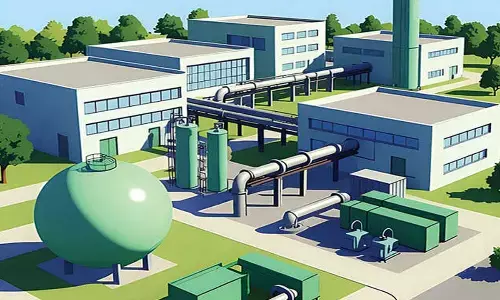World Environment Day- The IT industry should thrive to become sustainable toward the environment

Energy is the fuel that animates these dreams and runs India, but with climate change staring us in the face, we must pursue energy efficiency and reduce our carbon footprint, says Mr Alok Bansal, MD Visionet Systems India & Global Head of BFSI Business.
The IT sector holds the key to a sustainable future. With its significant contribution to environmental challenges, it's time for the industry to step up. Embracing energy-efficient technologies, responsibly recycling electronic waste, and fueling innovation with eco-friendly practices are essential.
Mr Alok Bansal, MD Visionet Systems India & Global Head of BFSI Business, discuss with The Hans India how the IT industry contributes to global sustainability goals, such as reducing greenhouse gas emissions or minimizing electronic waste. He says it's important to focus on Implementing green policies, raising employee awareness, and collaborating with environmental organizations.
1. What strategies should IT companies implement or plan to implement to reduce their environmental impact, considering the unique challenges and opportunities in the IT industry?
To start with, IT companies must measure and analyze their Greenhouse Gas Emissions (GHG) and then formulate solutions to combat them. Employee sensitization to environmental causes, conservation of electricity and water, minimizing the use of paper and plastic, reducing waste, and opting for renewable energy sources like solar panels will also help. Using recyclable materials in products and institutionalizing eco-sensitive policies are urgently needed today. Take the example of Hewlett-Packard, the first major IT company to report GHG emissions associated with its supply chain and even cut back on toxic substances in products like cartridges. The company also has a diligent recycling program to curtail the waste that would otherwise end up in landfills. Google, too champions clean energy and began purchasing renewable energy in 2010 and claims to be responsible for over 60 clean energy projects with a combined capacity of over 7 gigawatts. These examples can inspire even smaller corporations to design their own green agendas.
2. In what ways can the IT industry contribute to global sustainability goals, such as reducing greenhouse gas emissions or minimizing electronic waste? How does your company align with these goals?
Companies can use biodegradable materials in their products and switch to solar, wind, hydropower, biomass energy, and green technologies. I recently read a report about Microsoft's commitment to reduce and ultimately remove all traces of a carbon footprint. The company is committed to being carbon negative by 2030, and by 2050, it hopes to remove from the environment all the carbon it has emitted either directly or by electrical consumption since its inception in 1975. The company is also helping suppliers and customers to reduce their own carbon footprints while dedicating a $1 billion climate innovation fund for carbon reduction, capture, and removal technologies. Environmental sustainability is very much a part of our agenda. We also manage our e-waste responsibly and conserve energy and water.
3. How do you promote a culture of environmental responsibility within your organization? Can you provide examples of initiatives or programs encouraging employees to adopt eco-friendly practices at work and in their personal lives?
As I mentioned, we have a sustainability agenda and promote eco-sensitivity in the organization at every level. Another example I can give in this context is that of Intel, which has, since 2008, linked a portion of its executive and employee compensation to CSR initiatives. In 2022, the company pledged to reduce greenhouse gas emissions in its operations and value chain and is now focused on achieving the goal of 100% renewable electricity, net-positive water, and zero waste to landfill by 2030. Many companies today, including ours, are also working towards developing sustainable and green products and solutions, minimizing waste by going paperless through digital and cloud solutions, conserving water and energy, and offering incentives to employees to adopt sustainable practices.
4. The energy consumption of data centres is a significant concern when it comes to environmental impact. What steps should companies take to optimize energy efficiency in their data centres or server infrastructure?
Energy is the fuel that animates these dreams and runs India, but with climate change staring us in the face, we must pursue energy efficiency and reduce our carbon footprint. Data centres are energy intensive, and managing energy consumption is critical, along with following green practices in the areas of design, operation, and maintenance. Switching off systems when not in use, choosing energy-saving UPS models, LED lighting, and smarter cooling techniques can all add to resource efficiency.
5. E-waste management is a critical issue in the IT industry. How can IT companies address the challenges associated with e-waste disposal and recycling?
Computers, laptops, and countless electronic devices generate heaps of e-waste every single day. In fact, the market research company Frost and Sullivan has estimated that the total amount of e-waste in India is estimated to reach at least 11.5 million metric tonnes by 2025. We need an appropriate framework to address the e-waste issues and formulate policies that streamline the production, consumption, and waste generation cycle. How we build products, how they are used, repairable, recyclable, reusable, and biodegradable are all questions that must be answered. Many IT companies are adopting efficient e-waste disposal systems and working towards installing recycling units.



















